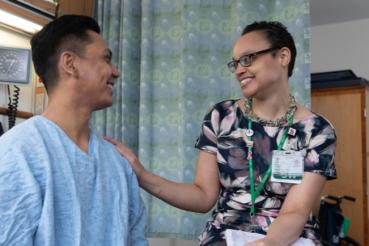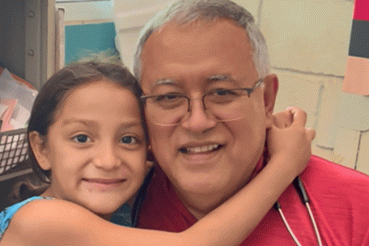Rush University System for Health is training young people in skills that lead to good-paying jobs. It’s one of Rush’s strategies for addressing inequitable outcomes in health, wealth and education.
“Lots of young people may have a dream, but no understanding of how or a way to achieve that dream,” said Rukiya Curvey-Johnson, who leads the Rush Education and Career Hub (REACH).
Curvey-Johnson has seen first-hand what can happen when young people feel like they have no future or become overwhelmed with obstacles. Her younger brother was killed by gun violence at age 19 while a college sophomore. Now, she’s spearheading an initiative to help young people work toward bright futures.
In addition to hiring more than 1,200 people since 2017 from the 10 West Side neighborhoods nearest to Rush University Medical Center, Rush has put up $1 million to start REACH, a strategic education and career initiative within the Rush BMO Institute for Health Equity. The hub has the aim of helping prepare 5,000 students yearly, from elementary through college, for prosperous careers in STEM (science, technology, engineering and mathematics) fields and in health care.
REACH participants are 80 percent Black and Latinx, 70 percent low-income, and more than 65 percent would-be first generation college students. As a result, REACH is building a more diverse pipeline of talent into the STEM and healthcare fields through mentoring, internships and academic enrichment.
The three- to five-year goal is to launch apprenticeships in Community Health and IT, reach 10,000 West Side students and become a national model for developing equitable career pathways for young people.
Curvey-Johnson knows it’s no easy road.
She also knows that the real work must start early, with children in elementary school.
That’s why REACH’s 14 programs include a “STEM-agineers” program targeted for Pre-K (pre-kindergarten) through fifth grade in five West Side elementary schools, Future Ready Learning Labs during the school day for grades 6-8 at two elementary schools, and Illinois’ first Health Professionals of America Club for middle school.
Students from 40 high schools who participate in REACH MedSTEM career pathways get help from the ground up, too. That starts with a process mysterious to many families — figuring out how to pay for college through REACH-sponsored financial aid workshops.
Beyond clinical roles, REACH also helps students gain experience in IT, business, finance and human resources — vital jobs in healthcare and elsewhere. REACH partners with other organizations to provide career-connected learning and opportunities to earn stackable credentials for in-demand, labor market-aligned career paths including IT, nursing, phlebotomy and ECG technician. College interns have the opportunity to conduct research with Rush staff and faculty.
The internships provide the necessary exposure, engagement and participation to help young people develop a STEM or healthcare occupational identity.
“We’ve had over 90 percent of our high-school graduates enroll in college and persist, and also have a health care or STEM major, and that’s huge,” Curvey-Johnson said.
Curvey-Johnson has drawn on her experience leading STEM strategies and leadership development at Chicago Public Schools.
“Four years ago, I visited Pre-K classrooms where a 4-year-old boy said he wanted to be a scientist,” she said. “I was excited and thought we should be doing everything to help him get on a path to science.
“This student is literally less than 2 miles from the Illinois Medical District and world-class institutions,” Curvey-Johnson said. “Yet everything about his immediate environment would say, ‘No, he can’t.’”
Soon after the visit, Rush hired Curvey-Johnson. Since then, Rush expanded program offerings across grade levels and tripled the number of students that REACH serves.
Curvey-Johnson still remembers her conversation with two leaders in Rush’s health equity initiatives, David Ansell, MD, and Darlene Hightower. They agreed that a healthier future and a more equitable recovery depend on investing in young people.
And it reminded her of a Gwendolyn Brooks quote: “We are each other’s harvest; we are each other’s business; we are each other’s magnitude and bond.”




